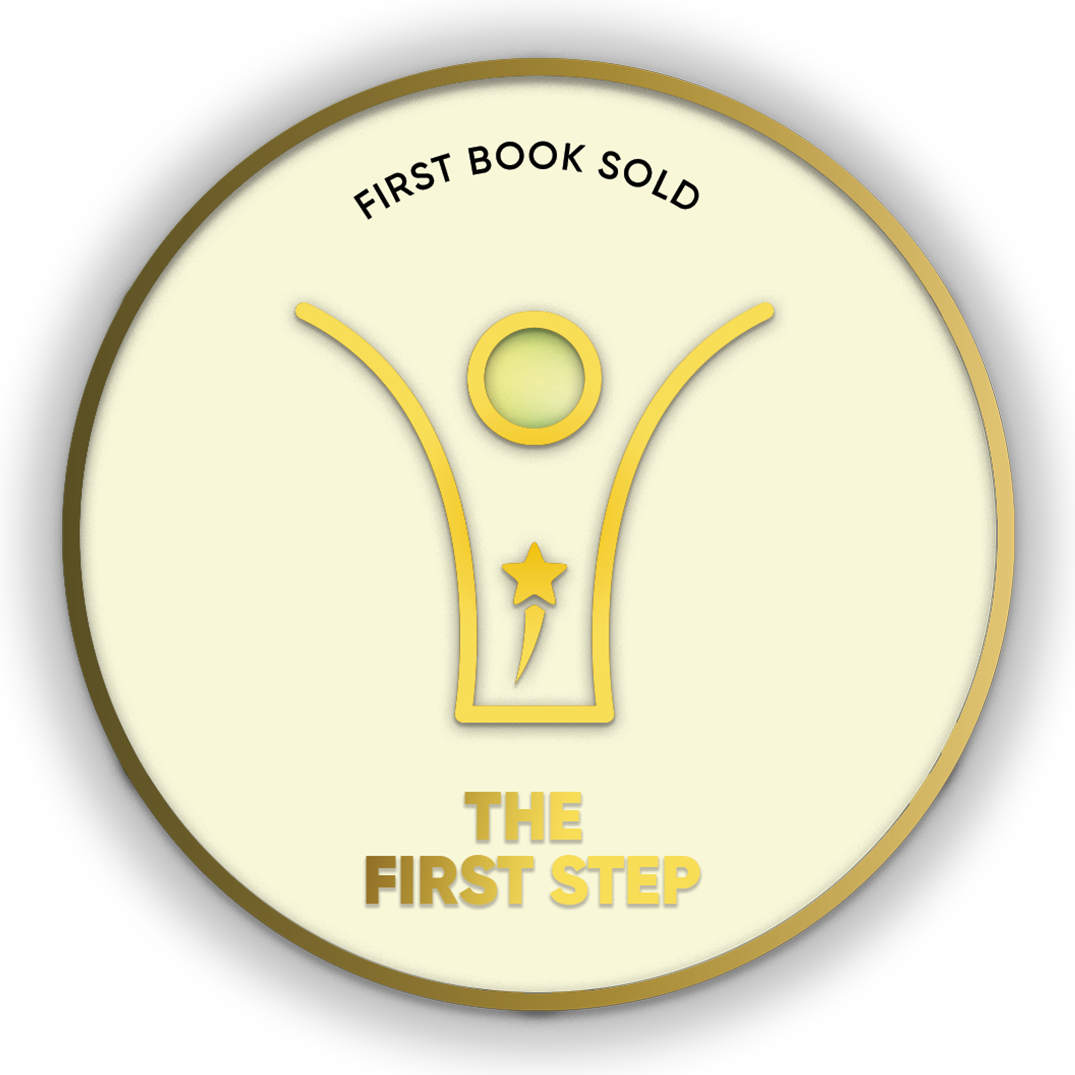
- Discover books
- For Writers
-
For Writers
-
Indie Author Championship
-
Challenges
Writing Contests
- Get Started

"It was a wonderful experience interacting with you and appreciate the way you have planned and executed the whole publication process within the agreed timelines.”
Subrat SaurabhAuthor of Kuch Woh Pal -
Crop your profile image

DATA STRUCTURES AND DESIGN
Books by Bharathi S
Data Structures and Design will try to teach you about three things:
It will present a collection of commonly used data structures and algorithms. These form a programmer’s basic “toolkit”. For many problems, some data structure or algorithm in the toolkit will provide a good solution. We focus on data structures and algorithms that have proven over time to be most useful.
It will introduce the idea of tradeoffs, and reinforce the
Data Structures and Design will try to teach you about three things:
It will present a collection of commonly used data structures and algorithms. These form a programmer’s basic “toolkit”. For many problems, some data structure or algorithm in the toolkit will provide a good solution. We focus on data structures and algorithms that have proven over time to be most useful.
It will introduce the idea of tradeoffs, and reinforce the concept that there are costs and benefits associated with every data structure or algorithm. This is done by describing, for each data structure, the amount of space and time required for typical operations. For each algorithm, we examine the time required for key input types.
It will teach you how to measure the effectiveness of a data structure or algorithm. Only through such measurement can you determine which data structure in your toolkit is most appropriate for a new problem. The techniques presented also allow you to judge the merits of new data structures that you or others might invent.
DATA BASE MANAGEMENT SYSTEMS
Books by Bharathi S
The database is now such an integral part of our day-to-day life that often we are not aware that we are using one. To start our discussion of databases, in this section we examine some applications of database systems. For the purposes of this discussion, we consider a database to be a collection of related data and a database management system (DBMS) to be the software that manages and controls access to the database. A database application is simply a progr
The database is now such an integral part of our day-to-day life that often we are not aware that we are using one. To start our discussion of databases, in this section we examine some applications of database systems. For the purposes of this discussion, we consider a database to be a collection of related data and a database management system (DBMS) to be the software that manages and controls access to the database. A database application is simply a program that interacts with the database at some point in its execution. We also use the more inclusive term database system as a collection of application programs that interact with the database along with the DBMS and the database itself. We provide more accurate definitions in Section.
BASICS OF DATA BASE DESIGN MANAGEMENT
Books by Bharathi S
The database is now such an integral part of our day-to-day life that often we are not aware that we are using one. To start our discussion of databases, in this section we examine some applications of database systems. For the purposes of this discussion, we consider a database to be a collection of related data and a database management system (DBMS) to be the software that manages and controls access to the database. A database application is simply a progr
The database is now such an integral part of our day-to-day life that often we are not aware that we are using one. To start our discussion of databases, in this section we examine some applications of database systems. For the purposes of this discussion, we consider a database to be a collection of related data and a database management system (DBMS) to be the software that manages and controls access to the database. A database application is simply a program that interacts with the database at some point in its execution. We also use the more inclusive term database system as a collection of application programs that interact with the database along with the DBMS and the database itself.
Introduction to Digital Systems
Books by Bharathi S
Introduction to Digital Systems is a comprehensive book covering, in one volume, both the fundamentals of digital electronics and the applications of digital devices and integrated circuits. It is different from similar books on the subject in more than one way. Each chapter in the book, whether it is related to operational fundamentals or applications, is amply illustrated with diagrams and design examples. In addition, the book covers several new topics, whi
Introduction to Digital Systems is a comprehensive book covering, in one volume, both the fundamentals of digital electronics and the applications of digital devices and integrated circuits. It is different from similar books on the subject in more than one way. Each chapter in the book, whether it is related to operational fundamentals or applications, is amply illustrated with diagrams and design examples. In addition, the book covers several new topics, which are of relevance to anyone having an interest in digital electronics and not covered in the books already in print on the subject. These include digital troubleshooting, digital instrumentation, programmable logic devices, microprocessors and microcontrollers. While the book covers in entirety what is required by undergraduate and graduate level students of engineering in electrical, electronics, computer science and information technology disciplines, it is intended to be a very useful reference book for professionals, R&D scientists and students at post graduate level.
Inside the Internet of Things
Books by Bharathi S
The Internet of Things is the evolutionary step of the Internet that creates a worldwide infrastructure interconnecting machines and humans. As the Internet became
public in the early 1990s, the first wave of its exploitation and deployment was
mainly focused on the impact to everyday services and applications that changed
the known models for financial transactions, shopping, news feeding and information sharing. It was a revolution that digitized
The Internet of Things is the evolutionary step of the Internet that creates a worldwide infrastructure interconnecting machines and humans. As the Internet became
public in the early 1990s, the first wave of its exploitation and deployment was
mainly focused on the impact to everyday services and applications that changed
the known models for financial transactions, shopping, news feeding and information sharing. It was a revolution that digitized a wide range of services as we knew
them, from banking and retail shopping to face-to-face communication and government services. The first two decades of the Internet revolution focused strongly on
consumer services and businesses, but human-centric. New business models
appeared for banking, for online shopping, video communication, etc. for consumers. Business to business models and the cloud have impacted businesses significantly, wiping out large sectors of industry that did not adjust to the fast pace of the
revolution.
Secured Smart Voting System Using Aadhaar
Books by Bharathi S
The main perspective of this book is to provide a simple and secured voting system in India. Since it is app-based it is more secured than online voting system. This system uses fingerprint for unique identification and Aadhaar details are fetched based on fingerprint data. This book provides significance for the senior citizens, disabled, patients, soldiers and migrants. People can participate in voting where ever they are located. Results will be announc
The main perspective of this book is to provide a simple and secured voting system in India. Since it is app-based it is more secured than online voting system. This system uses fingerprint for unique identification and Aadhaar details are fetched based on fingerprint data. This book provides significance for the senior citizens, disabled, patients, soldiers and migrants. People can participate in voting where ever they are located. Results will be announced immediately after completion of election process. This help to move a step ahead towards Digitalize India and Make in India
MACHINE LEARNING PART I
Books by Bharathi S
Machine Learning can be a Supervised or Unsupervised. If you have lesser amount of data and clearly labelled data for training, opt for Supervised Learning. Unsupervised Learning would generally give better performance and results for large data sets. If you have a huge data set easily available, go for deep learning techniques. You also have learned Reinforcement Learning and Deep Reinforcement Learning. You now know what Neural Networks are, their applicatio
Machine Learning can be a Supervised or Unsupervised. If you have lesser amount of data and clearly labelled data for training, opt for Supervised Learning. Unsupervised Learning would generally give better performance and results for large data sets. If you have a huge data set easily available, go for deep learning techniques. You also have learned Reinforcement Learning and Deep Reinforcement Learning. You now know what Neural Networks are, their applications and limitations.
Finally, when it comes to the development of machine learning models of your own, you looked at the choices of various development languages, IDEs and Platforms. Next thing that you need to do is start learning and practicing each machine learning technique. The subject is vast, it means that there is width, but if you consider the depth, each topic can be learned in a few hours. Each topic is independent of each other. You need to take into consideration one topic at a time, learn it, practice it and implement the algorithm/s in it using a language choice of yours. This is the best way to start studying Machine Learning. Practicing one topic at a time, very soon you would acquire the width that is eventually required of a Machine Learning expert.

Are you sure you want to close this?
You might lose all unsaved changes.
Select from one of our global stores to continue
 India
India
 Malaysia
Malaysia
 Singapore
Singapore
 UAE
UAE
Warning Message
The items in your Cart will be deleted, click ok to proceed.















